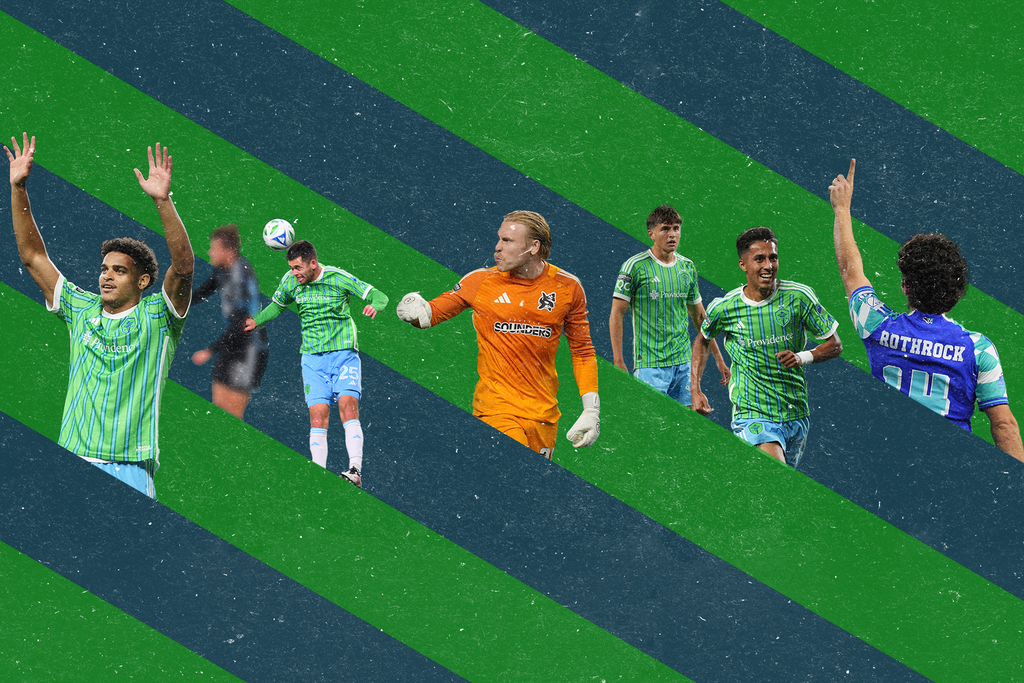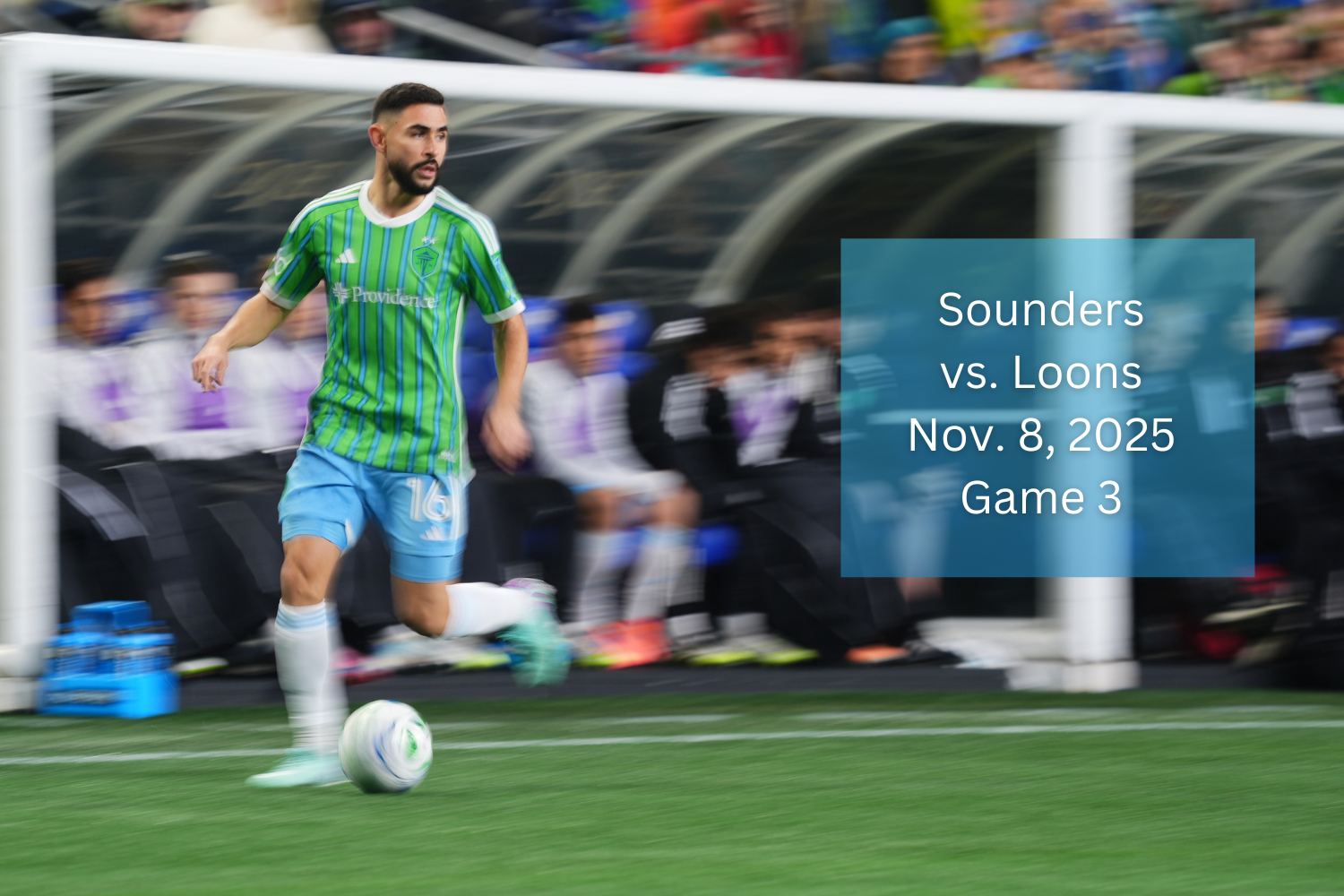I’m not entirely sure how 2025 will go down in the history books. Less than a week removed from the smoking ashes of the Game 3 flame-out, I know it feels like another roller-coaster year. There was at least one glorious high — lifting a Leagues Cup title in front of nearly 70,000 fans — but the way it ended was about as bad as we’ve ever experienced. Along the way, there were lots of interesting peaks and valleys.
Based on the survey we released before the playoffs, most fans seemed to be reasonably satisfied with what the Sounders had accomplished to that point. It will be interesting to see how that changes once the first-round elimination is factored in.
But we’ve got a long offseason to discuss all that. For now, I’d like to focus on what we learned from this year and what it tells us about 2026:
The offense improved a ton!
Coming into this year, head coach Brian Schmetzer made it very apparent that the No. 1 goal this year was to get more dangerous going forward. He made it known that the main way they were going to accomplish that was by allowing the double-pivots more freedom to join the attack.
I think we can safely say that tactical shift worked as designed. The Sounders didn’t just score seven more goals in the regular season, they scored 16 more from open play. The Sounders doubled the number of players who scored at least two goals, going from 5 to 10. It was a more varied and dynamic attack, arguably more entertaining than even those 2014-15 teams which were really about the star power of two players.
We saw this translate into other competitions, too. The Sounders scored seven goals in four Concacaf Champions Cup matches, 16 goals in six Leagues Cup matches and seven in three playoff games. By comparison, the Sounders had scored just seven goals in their previous eight playoff games combined.
They did all that without sacrificing much, if any, open-play defending. Once you account for set pieces, penalties and own-goals, the Sounders actually allowed fewer goals from open play this year than they did last year (25 vs. 27), when they had the league’s best defense.
What it means for 2026: Considering the Sounders accomplished all this while missing Jordan Morris for a large portion of the season and with relatively limited contributions from both Jesús Ferreira and Pedro de la Vega, I don’t expect much change in the attack. There’s every reason to believe that those three can contribute more than the 13 goals and nine assists they had in league play this year.
Of course, they’ll almost certainly need more production from them because it’s impossible to imagine Danny Musovski repeating his 14-goal, four-assist campaign. The Sounders have reportedly already exercised Musovski’s option, but that might just be setting things up so they can trade him in the offseason. That would also clear room for Osaze De Rosario to pick up some minutes after he had five goals across all competitions for the Sounders and 12 more for the Tacoma Defiance.
The set-piece defense was a disaster
While the open-play defense was arguably a little better this year than last year, the set-piece defense was a lot worse. After allowing just four goals on corners, free kicks and throw-ins in 2024, that number shot up to 12 in 2025. We saw that on stark display in the playoffs, where all three of Minnesota’s Game 3 goals came off set pieces (two of which came when the Sounders had a man advantage!).
Combined with their somewhat diminished set-piece scoring, the Sounders went from +9 on set pieces a year ago, to -4 this year. That’s a net change of 13 goals!
We saw this trend developing relatively early in the season and Schmetzer was asked about it several times. I don’t know how he really felt, but he definitely gave us the impression that he thought it would eventually even out. There was at least some logic behind that as the Sounders actually gave up fewer set-piece shots this year. But the quality of those shots seems to have been significantly better, as the Sounders went from allowing 6.43 xG to 10.15, according to American Soccer Analysis.
(The rest of the difference in terms of goals allowed is explained by the three additional penalties and four additional own-goals they allowed this year.)
What it means for 2026: I don’t think the Sounders suddenly forgot how to defend set pieces, but I do think that it’s possible they need to change the way they approach them. For at least the last few years, they’ve used a defensive scheme that is a combination of zonal and man marking on set pieces. It’s at least possible that teams have become sufficiently well drilled that this sort of scheme is just harder to execute.
Another possible explanation is that there was a lot more rotation on the backline this year than last year, as Jackson Ragen and Yeimar Gomez Andrade each missed extensive time. Of course, they were both on the field for all three of Minnesota’s goals in the playoffs.
This is a tough one to solve, but maybe having a more aggressive goalkeeper like Andrew Thomas helps some on the margins. He did claim about twice as many crosses as Frei did last year and he’s certainly a more athletic goalkeeper. But he also posted almost identical goals-against average across all competitions. In any case, I suspect this will be a major area of attention in the preseason.
Andrew Thomas’ time is now
The Sounders had effectively anointed Thomas as the heir apparent when he signed his contract extension last year, but this year he seemingly removed any doubt that he can handle the job. Thomas ended up making 15 starts across all competitions, which included all six of the Leagues Cup games in which he allowed just two goals, won a penalty shootout and was named Goalkeeper of the Tournament.
As much as his actual play, Thomas also carried himself with a refreshing swagger. I think we’ll all remember him calling his shot in the shootout against Puebla and he seemed to love the attention that came without coming in as a substitute against Minnesota United.
Let’s talk about that performance, too: Because the Sounders lost, I’m not sure if that will go down in the annals of Sounders lore, but it was so close to being legendary. Thomas dislocated his finger on the first attempt, taped it up and slammed it back into place and then went on to save two attempts and nearly saved another. He did it while bantering with fans and putting the Sounders in position to win the shootout on two separate occasions. Sure, he ended up missing his own attempt off the crossbar — which sealed the Sounders’ fate — but I think it showed how ready he is for the next step in his career.
More broadly, Thomas went 10-2-3 with five shutouts and a 1.33 goals against average. At 26, he deserves to be the starter.
What it means for 2026: Stefan Frei has a big decision to make, I suspect. He can either return to the Sounders with the understanding that he’s going to be more of a mentor and backup or he can try to extend his career by finding another MLS team. I sincerely hope he chooses to stay, in part because I think he would be an awesome fallback option in case Thomas gets hurt or falters, but also because I think he has a lot to offer off the field.
The midfield is in very good shape
Heading into 2025, there was at least some level of uncertainty around Cristian Roldan’s ability to shift into more of a defensive role than he’s ever had to play for a full season. To say he passed that test may be the biggest understatement of the season.










